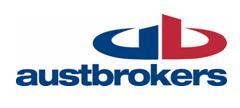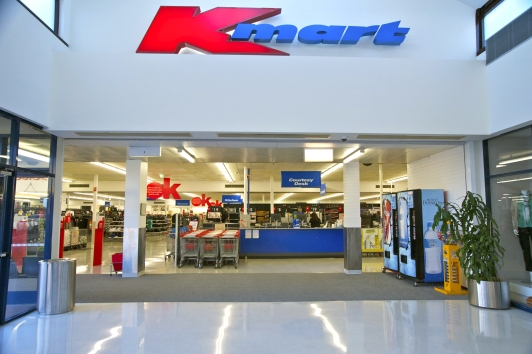Companies
-

We are delighted by Silver Chef
Russell Muldoon
December 20, 2012
We are delighted by the trading update provided late Wednesday night by Silver Chef’s (ASX: SIV) – a business I mentioned just last week on the Sky Business Channel as a ‘Stock to Watch’. It is also one we own in the both The Montgomery Fund and The Montgomery [Private] Fund.
Management have forecast strong EPS growth of 12.7% to 18.3% for the first half. This would be an excellent achievement in what many have dubbed a tough retailing environment. Clearly not everyone in the retail sector deserve to be tarred with the same brush.
Our expectations are for the business to report earnings at the top-end of this range given the underlying momentum and demand for their product suite.
Silver Chef provides lease financing to hospitality businesses under the Silver Chef brand and more recently, for commercial businesses under its GoGetta brand and excellent risk management processes appear to be in place. Both brands enjoy a growing a reputation as industry-leading financing product providers. In particular Rent-Try-Buy and Rent-Grow-Own put less stress on a businesses cash flow in their start-up phases, a large reason for their take-up.
Management have indicated to us that they believe their potential market is equivalent to about $250m in revenue per annum. At the full year 2012, SIV reported $85m in revenue. With the potential to expand by a factor of 3x from here, we are long-term holders and anticipate many more positive future updates. Keep watching this space.
A word of caution. We have a large holding across our two well-diversified funds in Silver Chef and as shown, the share price has performed spectacularly well recently. Please therefore seek professional advice and understand the risks.
by Russell Muldoon Posted in Companies, Insightful Insights, Market Valuation, Value.able.
-

Webjet expands its footprint in the fast growing Asian travel market
David Buckland
December 14, 2012
Yesterday, Webjet announced the acquisition of Zuji for US$25m, or 4.6X estimated EBITDA of $5.4m, from Sabre Holdings.
Zuji adds $300m of Total Transaction Value (TTV) and expands Webjet’s footprint in the fast growing Asian travel market. For context, Webjet’s TTV for the year to June 2012 was $768m, up 30% year on year.
by David Buckland Posted in Companies, Insightful Insights, Tourism.
- save this article
- POSTED IN Companies, Insightful Insights, Tourism
-

Steady as she goes
Ben MacNevin
December 10, 2012
Few Australian management teams and their boards have been successful over long periods of time in ‘rolling’ up businesses under one roof. Inevitably, too much is paid; they struggle to deploy systems to drive scale and efficiencies; and retaining key management becomes a key problem once their lock-in period expires. It’s why we are so cautious of business strategies that revolve largely around acquisitions to grow the business. While it is easy to ‘grow’ by simply purchasing another business’ earnings, unless the return on the equity employed remains stable or improves, such capital allocation decisions will erode shareholder wealth over time.
by Ben MacNevin Posted in Companies, Insightful Insights, Insurance.
- save this article
- POSTED IN Companies, Insightful Insights, Insurance
-

The “New” Kmart
Ben MacNevin
December 7, 2012
With Christmas trading moving into full swing, everyone’s focus seems to be on the retail climate in Australia, with particular themes in the media springing to mind:
· Online sales are making it difficult for bricks and mortar stores
· Interest rates need to be cut further to stimulate spending
· The failure of Click Frenzy…
by Ben MacNevin Posted in Companies, Consumer discretionary, Investing Education.
-


WHITEPAPERS
Servcorp at a crossroads
Roger Montgomery
December 1, 2012
Expansion success hinges on global economies
Two analysts, presented with the same set of facts can, and often do, arrive at entirely different conclusions. Indeed, every day and every time a stock trades, the buyer and seller are arriving at vastly different conclusions.
On the one hand a renewed interest in cyclical stocks does not make it difficult to imagine Servcorp shares racing higher – the company having boldly positioned itself for an economic upturn by doubling its floor portfolio and expanding in the United States in anticipation of a strengthening global economy.
by Roger Montgomery Posted in Companies, Whitepapers.
- 1 Comments
- save this article
- POSTED IN Companies, Whitepapers
-

Mining hits the growth cliff
David Buckland
November 30, 2012
On Wednesday the Australian Bureau of Resources and Energy Economics said 51 mineral projects, 18 gas and petroleum projects and 18 infrastructure projects worth $268 billion had been approved. Of the 87 projects, 11 mega projects worth more than $5 billion each, account for an aggregate $200 billion or 75 per cent of the total committed project value. For some months now we have been warning investors of a growth cliff and note the slowing in the number of projects that have progressed from potential to committed. For example, in the six months to April 2012, 21 projects worth $45 billion were approved. However, in the six months to October 2012, 10 projects worth $13 billion were approved.
by David Buckland Posted in Companies, Energy / Resources.
- 4 Comments
- save this article
- POSTED IN Companies, Energy / Resources
-

MEDIA
Where’s the Value?
Roger Montgomery
November 26, 2012
Roger provides his insights into the current lack of value in the Australian market with Ross Greenwood on his 2GB radio show. Listen here.
This program was broadcast 26 November 2012.
by Roger Montgomery Posted in Companies, Intrinsic Value, Investing Education, Radio.
- save this article
- POSTED IN Companies, Intrinsic Value, Investing Education, Radio
-

MEDIA
What are Roger Montgomery’s insights into value in the current market?
Roger Montgomery
November 21, 2012
Do Maxitrans (MXI), QBE (QBE), ARBE Corporation (ARP), Cobar Consolidated (CCU), IOOF (IFL), Seek (SEK), Fleetwood (FWD), Adelaide Brighton (ABC), NIDO Petroleum (NDO), Boral (BLD), Cardno (CDD), Jumbo Interactive (JIN) or Coca Cola Amatil (CCA) achieve the coveted A1 grade? Watch this edition of Sky Business’ Your Money Your Call 21 November 2012 program now to find out, and also learn Roger’s insights into value in the current market in resource stocks. Watch here.
by Roger Montgomery Posted in Companies, Investing Education, Market Valuation, TV Appearances.
-
Is Telstra in love with Ten?
Roger Montgomery
November 16, 2012
With the Ten share price up 5% today we reckon some participants must be trading on rumours. In this case, rumours are swirling around the market that Telstra is about to buy Ten. We don’t of course trade in rumours and we won’t be starting now. We are keen however to watch Telstra’s content strategy roll out – in anticipation of the NBN being completed. As we have previously mentioned, by 2017 Telstra will likely dominate the digital delivery of content. The delivery platform will have been levelled and so the competitive focus for Telstra needs to be content. They’ll knock on your door with a big black box and bundled deal offering IPTV, Foxtel, FoxSports and (Ten?) all on the one platform for one great price….
So could Ten be part of that strategy? As is always the case with rumours, time will tell.
by Roger Montgomery Posted in Companies, Insightful Insights, Market Valuation.
-

MEDIA
What are Tim Kelley’s insights on Exchange Traded Funds?
Roger Montgomery
November 15, 2012
Do Energy Action (EAX), Central Petroleum (CTP), Perseus (PRU), Iluka Resources (ILU), AGL (AGK), Matrix (MCE), Reward Minerals (RWD), FKP Property (FKP), Rio Tinto (RIO), Telecom NZ (TEL), Hills Holdings (HIL), Aurora (AUT), DWS (DWS) Cash Converters (CCV) or NAB (NAB) achieve the coveted A1 grade? Watch this edition of Sky Business’ Your Money Your Call 15 November 2012 program now to find out, and also learn Tim’s insights on Exchange Traded Funds. Watch here.
by Roger Montgomery Posted in Companies, Insightful Insights, Investing Education, TV Appearances.

